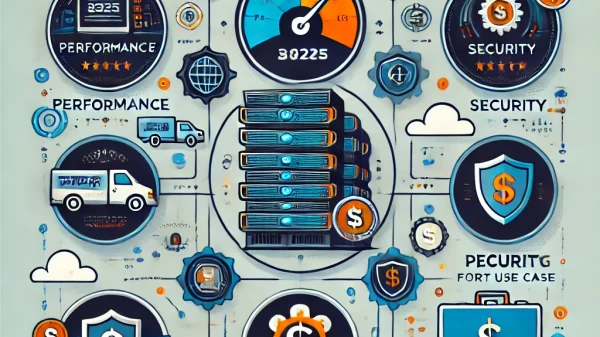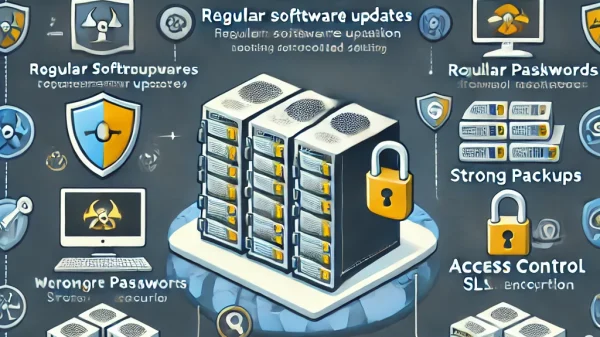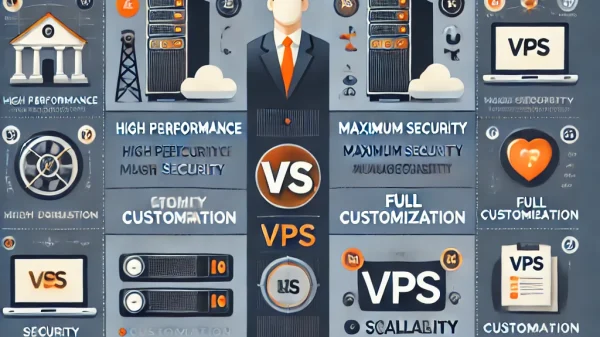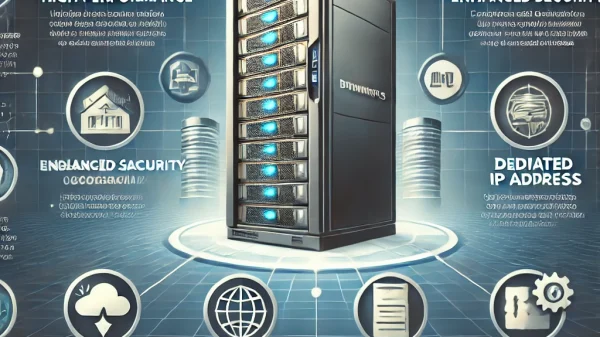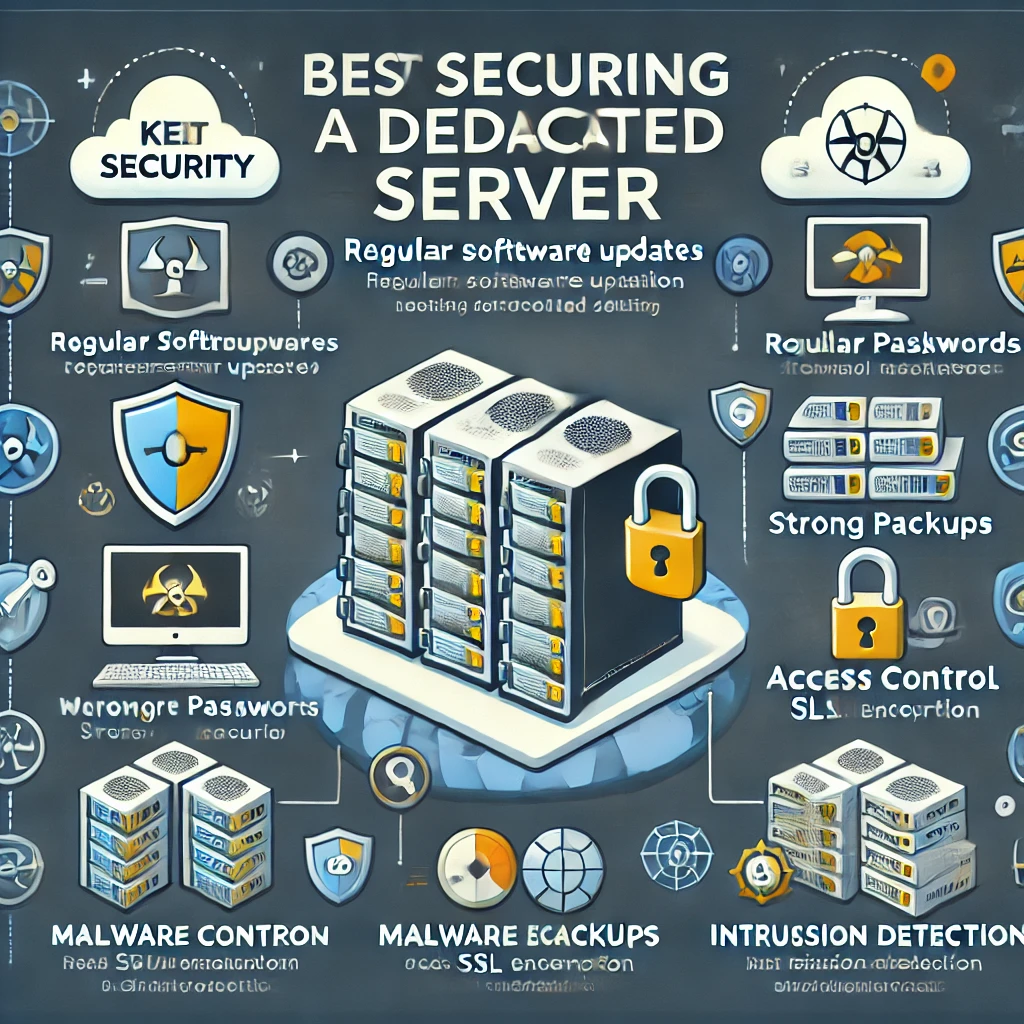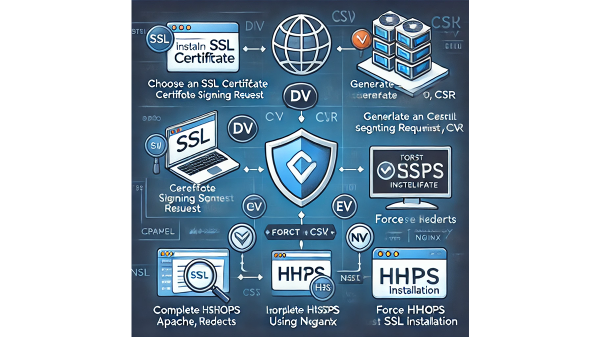A dedicated server provides businesses with powerful performance, full control, and scalability. However, with great control comes great responsibility—securing your dedicated server is crucial to prevent cyber threats, data breaches, and unauthorized access. In this guide, we’ll explore best practices to secure your dedicated server and ensure maximum protection.
| Security Measure | Description |
|---|---|
| Regular Software Updates | Ensure your OS, control panel, and applications are always up to date to patch security vulnerabilities. |
| Firewall Configuration | Set up firewalls to filter incoming and outgoing traffic and prevent unauthorized access. |
| Strong Password Policies | Enforce complex passwords and enable two-factor authentication (2FA) for added security. |
| Secure SSH Access | Change the default SSH port, disable root login, and use SSH keys for authentication. |
| Regular Backups | Schedule automated backups to protect data against loss due to cyberattacks or hardware failures. |
| Malware Scanning | Use antivirus and anti-malware tools to regularly scan and remove malicious software. |
| Access Control & User Management | Limit administrative privileges and monitor user activity logs for suspicious behavior. |
| SSL/TLS Encryption | Install SSL certificates to secure data transmission between the server and users. |
| Monitoring & Logging | Enable server monitoring and logging tools to detect and respond to security threats. |
| Intrusion Detection Systems (IDS) | Deploy IDS to track and block unauthorized activities and potential intrusions. |
1. Keep Your Server Software Updated
Outdated software is one of the leading causes of security vulnerabilities. Always update:
✔️ Operating System (OS): Ensure your Linux (Ubuntu, CentOS) or Windows Server is always running the latest patches.
✔️ Control Panels & Applications: Keep cPanel, Plesk, and installed applications up to date.
✔️ Security Patches: Regularly install patches for your software and services.
💡 Tip: Enable automatic updates where possible to minimize security risks.
2. Use Strong Authentication Methods
Weak passwords and authentication methods make it easy for hackers to gain access. Secure your login process by:
✔️ Disabling Root Login: Prevent direct SSH access to the root user. Instead, use a normal user and switch to root when necessary.
✔️ Enforcing Strong Passwords: Use long, complex passwords with numbers, symbols, and uppercase/lowercase letters.
✔️ Implementing Two-Factor Authentication (2FA): Add an extra layer of protection to prevent unauthorized logins.
💡 Tip: Consider SSH Key Authentication instead of passwords for enhanced security.
3. Configure a Firewall and Intrusion Detection System (IDS)
Firewalls and IDS help monitor and block malicious activity. Essential steps include:
✔️ Use a Dedicated Firewall: Set up iptables, UFW (Linux), or Windows Firewall to control traffic.
✔️ Install an Intrusion Detection System (IDS): Use Fail2Ban, AIDE, or Snort to monitor suspicious login attempts.
✔️ Close Unused Ports: Open only the necessary ports for web services and applications.
💡 Tip: A Web Application Firewall (WAF) like ModSecurity can protect your server from web-based attacks.
4. Secure Remote Access
Remote access is necessary for managing your server, but it must be done securely:
✔️ Use SSH Instead of Telnet: SSH encrypts connections, while Telnet does not.
✔️ Change the Default SSH Port: The default SSH port (22) is a common target for brute-force attacks. Change it to a random, high-numbered port.
✔️ Limit Access by IP Address: Configure your firewall to allow SSH connections only from trusted IP addresses.
💡 Tip: Use VPNs or bastion hosts to further protect remote server access.
5. Enable Data Encryption
Encryption ensures that even if data is intercepted, it remains unreadable. Key encryption practices include:
✔️ Use SSL/TLS Certificates: Encrypt website data by installing an SSL certificate (Let’s Encrypt, Cloudflare SSL).
✔️ Encrypt Disk & Backup Files: Use LUKS or BitLocker to encrypt sensitive data on the server.
✔️ Secure Database Connections: Use SSL for database connections like MySQL, PostgreSQL, and MongoDB.
💡 Tip: Avoid storing unencrypted sensitive data on your server.
6. Regularly Monitor and Audit Server Logs
Keeping an eye on your logs can help detect suspicious activity early.
✔️ Use Log Monitoring Tools: Employ Logwatch, Splunk, or ELK Stack to analyze server logs.
✔️ Enable Real-Time Alerts: Configure alerts for multiple failed login attempts, high CPU usage, or suspicious file changes.
✔️ Audit File System Changes: Use Tripwire or AIDE to track unauthorized modifications.
💡 Tip: Review cron jobs and scheduled tasks to ensure no unauthorized scripts are running.
7. Implement Regular Backups
Backups protect against data loss due to attacks, corruption, or human error. Best practices include:
✔️ Use Offsite & Cloud Backups: Store backups on separate servers or cloud storage (AWS, Google Drive, or Backblaze).
✔️ Automate Backup Scheduling: Set up daily, weekly, or incremental backups using rsync, cPanel Backup, or Bacula.
✔️ Test Backup Restoration: Regularly verify that backups can be restored successfully.
💡 Tip: Encrypt your backups to prevent unauthorized access.
8. Disable Unnecessary Services & Ports
Running unnecessary services exposes your server to attacks. Best practices include:
✔️ Disable Unused Services: Stop services like FTP, Telnet, or outdated database servers if not needed.
✔️ Scan for Open Ports: Use Nmap or Netstat to identify and close unnecessary ports.
✔️ Block Unauthorized Access: Restrict access to services using firewall rules and fail2ban.
💡 Tip: A “least privilege” approach ensures that only necessary services are active.
9. Use Secure FTP & Database Access
Unsecure file transfers and database connections pose security risks.
✔️ Use SFTP Instead of FTP: Secure File Transfer Protocol (SFTP) encrypts data during transmission.
✔️ Restrict Database Access: Allow connections only from specific IPs and use strong credentials.
✔️ Enable Database Encryption: Encrypt sensitive database fields and ensure proper permissions.
💡 Tip: Disable remote MySQL access if not needed to prevent brute-force attacks.
10. Conduct Regular Security Audits & Penetration Testing
Regular testing ensures that your security measures are effective.
✔️ Run Security Scans: Use Lynis, OpenVAS, or Nessus to detect vulnerabilities.
✔️ Perform Penetration Testing: Simulate cyberattacks using tools like Metasploit to find weak spots.
✔️ Follow Security Compliance Standards: Ensure compliance with GDPR, HIPAA, or PCI-DSS regulations if handling sensitive data.
💡 Tip: Hire ethical hackers or security experts for external audits.
Conclusion
Securing your dedicated server requires a multi-layered approach, combining strong authentication, encryption, monitoring, and regular updates. By following these best practices, you can significantly reduce the risk of cyberattacks, safeguard data, and ensure server stability.

